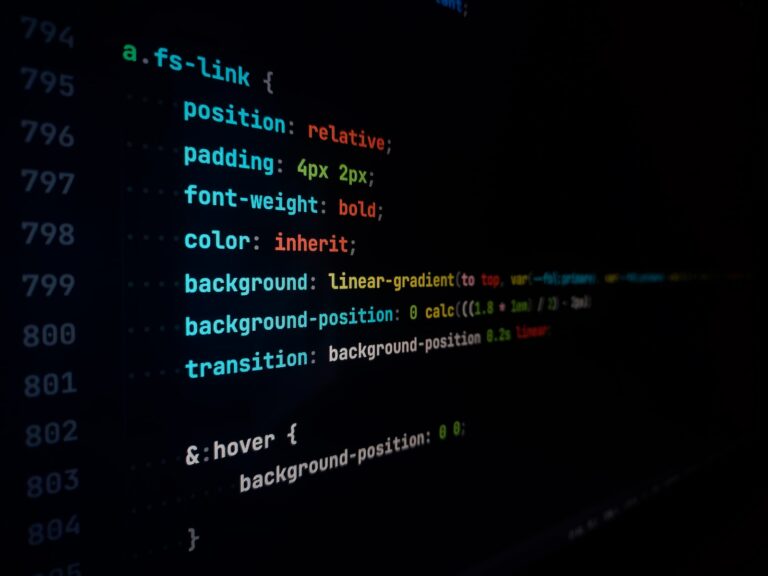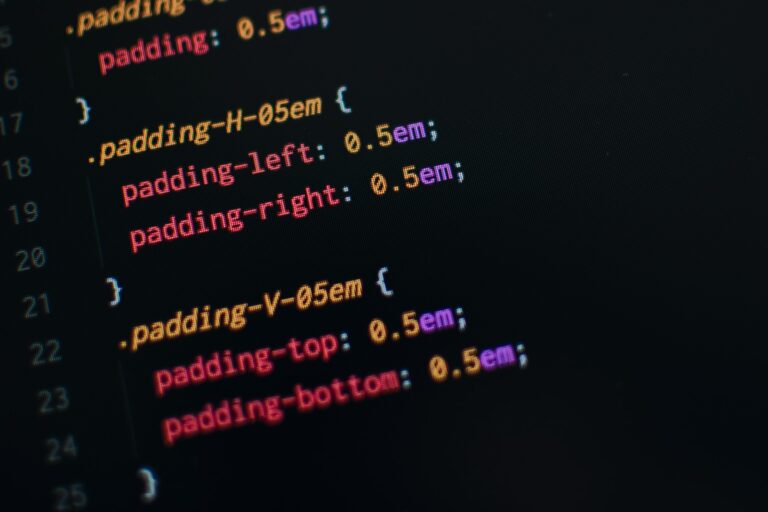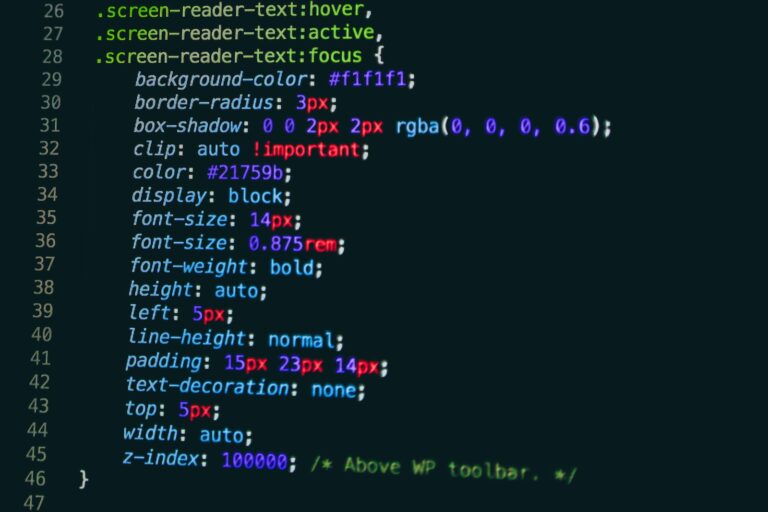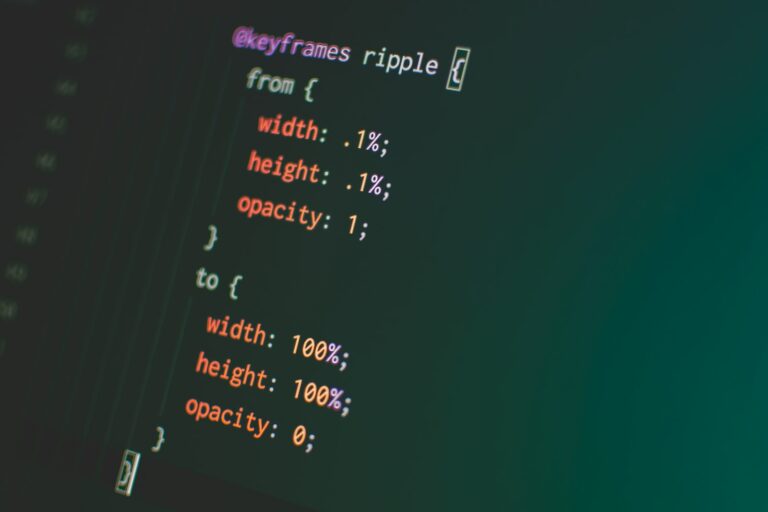In the world of web design, CSS is an essential tool for creating beautiful and functional websites. One of the most crucial aspects of CSS is positioning, which enables you to control the layout and placement of elements on a webpage. Understanding CSS positioning is essential for any web designer, as it can make or break the user experience of a website.
In this comprehensive guide, we will teach you all about CSS positioning techniques, including absolute, relative, and fixed positioning. We’ll explain the fundamentals of CSS positioning, provide practical examples, and explore advanced concepts to help you take your web design skills to the next level.
Key Takeaways:
- CSS positioning is crucial for controlling the layout and placement of elements on a webpage
- Mastering CSS positioning techniques, including absolute, relative, fixed, float, and z-index, is essential for any web designer
- Understanding the basics of CSS positioning is crucial before diving into specific techniques
Understanding CSS Positioning Basics
CSS positioning is a technique that allows you to control the position of HTML elements on a webpage. It is an essential skill for web designers and developers, as it enables the creation of visually appealing and functional designs.
The CSS positioning property accepts several values, including absolute, relative, fixed, and static, each with its unique characteristics and use cases. Understanding the basics of CSS positioning is crucial to the mastery of more advanced techniques.
Exploring Absolute Positioning in CSS
When it comes to precise element placement on a webpage, absolute positioning is a powerful tool in CSS. With absolute positioning, an element is positioned relative to its nearest positioned ancestor or to the initial containing block.
To apply absolute positioning, you will need to use the position property in your CSS code and set its value to absolute. Once set, you will also need to specify the element’s positioning using the top, bottom, left, and right properties, which determine the element’s position from the top, bottom, left, and right edges of its nearest positioned ancestor.
| Property | Description |
|---|---|
| position | Specifies the positioning type for the element |
| top | Specifies the distance between the top edge of the element and the top edge of its positioned ancestor |
| bottom | Specifies the distance between the bottom edge of the element and the bottom edge of its positioned ancestor |
| left | Specifies the distance between the left edge of the element and the left edge of its positioned ancestor |
| right | Specifies the distance between the right edge of the element and the right edge of its positioned ancestor |
It is important to note that an element with absolute positioning is taken out of the document flow, meaning it does not affect the positioning of other elements on the page. This can lead to overlapping elements if positioning is not managed properly.
Here is an example of absolute positioning in action:
<div style=”position: relative; width: 200px; height: 200px; border: 1px solid black;”>
<div style=”position: absolute; top: 50px; left: 50px; width: 100px; height: 100px; background-color: red;”></div>
</div>
In this example, the inner <div> element is positioned 50 pixels from the top and left edges of its positioned ancestor, which is the outer <div> element with relative positioning.
When to Use Absolute Positioning
Absolute positioning is best used when precise element placement is necessary, such as with pop-up menus, image overlays, or slide-out panels. When used effectively, it can add depth and interest to your web designs.
Mastering Relative Positioning in CSS.
While absolute positioning is great for pixel-perfect placement, relative positioning is a powerful tool for controlling the position of elements in relation to their default placement. With relative positioning, you can adjust an element’s position from its default placement, without affecting the layout of other elements on the page.
To use relative positioning, you need to specify the amount of adjustment you want to make from the element’s default position. This can be done using the top, bottom, left, and right properties. For example, to move an element 20 pixels to the right of its default position, you would use:
position: relative;
left: 20px;
It is important to note that when using relative positioning, the space originally allocated for the element remains in place, even if the element is moved. This can result in overlapping elements if not careful. However, relative positioning is a great way to adjust an element’s position slightly without disrupting the layout of other elements.
Using Relative Positioning with Other Positioning Techniques
Relative positioning can be used in conjunction with other positioning techniques, such as absolute and fixed positioning. When an element is absolutely positioned, it is positioned relative to its closest positioned ancestor. This means that if the ancestor is relatively positioned, the absolute position of the child element will be relative to the ancestor’s position.
Similarly, when using fixed positioning, an element is positioned relative to the viewport. However, if a parent element is relatively positioned, the fixed element will be positioned relative to the parent element instead of the viewport.
By using relative positioning in combination with absolute or fixed positioning, you can create complex layouts with precise positioning of elements.
Harnessing the Power of Fixed Positioning
In CSS, fixed positioning is a valuable technique for creating elements that remain in a fixed position on your webpage, irrespective of scrolling. This is particularly useful for creating navigation bars and headers that need to stay in view throughout the user’s browsing experience.
Fixed positioning is achieved by setting the CSS position property to “fixed”. This will instruct the browser to position the element relative to the viewport, instead of relative to the document flow.
One thing to keep in mind when using fixed positioning is that it can cause overlapping content issues. To avoid this, make sure to set a sufficient margin-top for the following elements on your page.
| Property | Description |
|---|---|
| position: fixed; | Sets the element as fixed position |
| top, left, bottom, right | Sets the element position relative to the viewport |
Note: Internet Explorer 6 does not support fixed positioning. If you need to support IE6, consider using JavaScript to achieve similar functionality.
Understanding Static Positioning in CSS
Static positioning is the default positioning method in CSS. When an element is positioned statically, it is positioned in the normal flow of the document. This means that if no other positioning properties are set, the element will appear where it normally would in the document.
Static positioning is often used for simple elements such as text or images that do not require any special placement or adjustment.
When using static positioning, no additional CSS properties are required. However, it is important to note that other positioning methods, such as absolute or relative positioning, may override static positioning if they are applied to the same element.
Navigating CSS Float Positioning
Float positioning is a commonly used CSS technique for creating multi-column layouts. The float property allows elements to be moved to the left or right of their default position, with other elements flowing around them.
To float an element, simply apply the float property to it with a value of left or right. This will move the element to the specified side, with content flowing around it. It is important to clear the float after the floated element to avoid layout issues. This can be achieved by applying the clear property to the element after the floated element with a value of both, left, or right, depending on the side of the float.
Example
Consider the following HTML code:
<div class=”container”>
<div class=”float-left”> Left Column </div>
<div class=”float-right”> Right Column </div>
</div>
To float the left column to the left and right column to the right, apply the following CSS:
.container {
width: 100%;
}
.float-left {
float: left;
width: 50%;
}
.float-right {
float: right;
width: 50%;
}
.clearfix::after {
content: “”;
display: table;
clear: both;
}
This will float the left column to the left and the right column to the right, with other content flowing around them. The clearfix class is added to the container to clear the float after the floated elements, ensuring proper layout.
Mastering CSS z-index Positioning
The z-index property is essential for controlling the stacking order of elements in CSS. It specifies how elements are layered over each other on a webpage. The higher the z-index value, the closer the element is to the top of the stack, and the lower the value, the closer it is to the bottom.
When using z-index, it’s important to note that it only applies to positioned elements (i.e., elements with position: absolute, relative, or fixed). A common mistake is forgetting to define the position property of an element before applying z-index.
Nested z-index
When working with nested elements, the stacking order of the child elements is relative to the parent element. In other words, the z-index of a child element is only compared to the z-index of its parent and not the entire document.
To control the stacking order of nested elements, it’s crucial to understand that the parent element’s z-index value affects all its children. If a child element has a higher z-index value than its parent, it will still be displayed below the parent’s children with higher z-index values.
Practical Examples
Let’s consider a practical example to illustrate how z-index works. Suppose you have a website header with a dropdown menu that appears on hover. To make sure the dropdown menu appears above all other elements on the webpage, you can apply a higher z-index value to the dropdown’s parent element. For instance:
HTML:
<div class="header"> <ul class="menu"> <li>Home</li> <li class="dropdown-item">Dropdown</li> </ul> <div class="dropdown"> <ul> <li>Item 1</li> <li>Item 2</li> </ul> </div> </div>CSS:
.header { position: relative; z-index: 1; } .dropdown { position: absolute; display: none; z-index: 2; } .dropdown-item:hover ~ .dropdown { display: block; }
In this example, the header element has a z-index of 1, and the dropdown element has a z-index of 2. Therefore, the dropdown menu will always appear above the header and any other elements on the page.
In Conclusion
CSS z-index positioning is a powerful tool for controlling the stacking order of elements on a webpage. By understanding how z-index works, you can ensure that your website’s design is flawless and easy to use.
CSS Positioning Tutorial – Step-by-Step Guide
Now that you have a strong understanding of CSS positioning, it’s time to apply your knowledge with a step-by-step tutorial. Follow these instructions to create a simple layout with absolute and relative positioning:
- Create a new HTML document and add a header, main section, and footer.
- Add a navigation menu inside the header and style it with relative positioning. Use the top and left properties to adjust its placement.
- Add a hero image in the main section and style it with absolute positioning. Use the top, left, and z-index properties to position it on top of the navigation menu.
- Add a call to action button inside the hero image and style it with absolute positioning. Use the top, right, and z-index properties to position it in the top-right corner of the hero image.
- Add some text content below the hero image and style it with relative positioning. Use the top, left, and right properties to adjust its placement.
- Add a footer section at the bottom of the page and style it with fixed positioning. Use the bottom property to make it stay in place while the user scrolls the page.
Remember to test your layout in different browsers and screen sizes to ensure it is responsive and looks great on all devices.
Advanced CSS Positioning Techniques
Now that you have mastered the basics of CSS positioning, it’s time to take your skills to the next level with advanced techniques. This section will cover some of the more complex concepts that can help you further enhance your web designs.
Nested Positioning
Nested positioning allows you to place one element inside another, creating more intricate designs. To achieve this, you can use a combination of relative and absolute positioning. By setting the parent element to relative positioning and the child element to absolute positioning, you can position the child element relative to the parent element.
| Parent Element CSS: | position: relative; |
|---|---|
| Child Element CSS: | position: absolute; top: 50px; left: 50px; |
Inline-block
The inline-block display property allows elements to be positioned side by side, similar to float positioning. The key difference is that inline-block allows elements to maintain their block-level properties, such as height and width, while also being positioned inline.
| Element CSS: | display: inline-block; vertical-align: top; |
|---|
CSS Transform
CSS transform is a powerful tool for modifying the shape, position, and size of elements. Using CSS transform, you can rotate, scale, skew, or translate an element with ease.
| Element CSS: | transform: rotate(45deg); |
|---|
All of these advanced CSS positioning techniques require a solid understanding of the basics covered earlier in this guide. With practice and experimentation, you can create highly customized and dynamic web designs.
Troubleshooting Common CSS Positioning Issues
CSS positioning is a powerful tool in web design, but it can also lead to unexpected layout issues. Here are some common problems you may encounter, and how to troubleshoot them:
1. Overlapping Elements
If two elements are overlapping, it is likely due to conflicting positioning values. Check the positioning of both elements and adjust as needed. The z-index property may also be used to control the stacking order of elements.
2. Element Not in Desired Location
If an element is not in its desired location, ensure that the correct positioning property is being used. Also check if any parent elements are affecting the positioning of the element. Adjusting the parent element’s positioning may resolve the issue.
3. Element Not Displaying at All
If an element is not displaying at all, check if it has any conflicting CSS properties, such as display: none, or if it is positioned outside of the visible area of the webpage. Adjust the element’s CSS properties as needed.
4. Unwanted Padding or Margins
Unwanted padding or margins can often be the result of default browser styles affecting the webpage. Use a CSS reset stylesheet to remove default browser styles and ensure consistent styling across different browsers.
By following these troubleshooting tips, you can overcome common CSS positioning issues and create flawless web designs.
Conclusion
CSS positioning is an essential aspect of web design that allows designers to create visually appealing layouts with precision. In this comprehensive guide, we have covered the basics of CSS positioning, including absolute, relative, fixed, static, and float positioning, as well as the z-index property.
With this knowledge, you are well-equipped to create stunning web designs that are optimized for user experience and engagement. Whether you are a beginner or an experienced designer, mastering CSS positioning techniques will undoubtedly take your web design skills to the next level.
Continue Learning and Exploring
If you want to continue exploring CSS positioning and take your skills to the next level, there are many resources available that can help you. Consider taking an online course or reading books on advanced CSS concepts. Additionally, practice is crucial when it comes to mastering CSS positioning, so don’t be afraid to experiment with different techniques and layouts.
Remember, CSS positioning is just one aspect of web design. To create truly exceptional websites, you must also consider other key elements such as user interface design, accessibility, and content strategy. By continuously learning and exploring, you can become a well-rounded designer who can create beautiful, functional, and engaging websites for users across the world.







